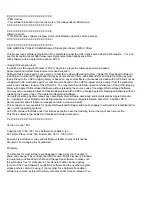
between 0 and 2
63
-1, expressed in KB/second, although a more realistic upper limit is the
throughput in KB/second that the particular array in question is capable of providing, given its
configuration.
NOTE:
Throughput, also called bandwidth, is a measure of the amount of data processed by the
array per unit of time. It is usually measured in MB/second.
QoS rules support specifying an IOPS upper limit, a bandwidth upper limit, or both. The iteration
towards a new IOPS or bandwidth setting follows a damped exponential curve and is completed
in a few seconds. During operation, HP 3PAR Priority Optimization samples the IOPS and bandwidth
values per VVset every 8 ms, and assembles 625 of these periods into a moving 5-second averaged
window to adjust the ingress of the I/O to the QoS cap that was set.
QoS Rule Actions
QoS rules are subject to five distinct actions:
Create
A QoS rule is created.
Enable
A disabled QoS rule is made active.
Disable
An active QoS rule is made inactive.
Change
The limit values for a QoS rule are modified.
Clear
The QoS rule is removed from the system.
A QoS rule that is created becomes active immediately. This default behavior can be overridden
when using the HP 3PAR CLI to create the rule; the HP 3PAR MC does not offer that option.
Changing one or both limit values in a QoS rule activates those values instantly on the VVset; there
is no need to disable the QoS rule first. An active QoS rule can be removed without first disabling
it.
Overlapping QoS rules
A VV can be a member of multiple VVsets, each of which can have a QoS rule defined. In such
a case, the I/O to and from volumes in the VVset is governed by multiple, possibly overlapping
rules. All active rules for a particular VVset are combined using wired-OR logic: the QoS limit that
is reached first takes precedence. A QoS rule can be created on a VVset that has none, or not all,
of its VVs exported to a host.
Minimum QoS Settings
HP 3PAR Priority Optimization provides no enforcement for minimum QoS levels. The minimum
will be ensured, provided the system has been correctly sized for the expected total IOPS and
throughput, and provided QoS rules against all VVsets were installed such that their combined
sum does not exceed what the system is capable of delivering.
QoS on Copied Volumes
Virtual and physical copies of VVs in a VVset are not automatically a member of the parent VVset;
they have to be added manually to the parent VVset in order to be governed by the same QoS
rules. Virtual and physical copies can be subject to a different QoS rule than their parent VV, if
desired. QoS rules are persistent across a reboot of a HP 3PAR StoreServ Storage system. A VVset
cannot be removed unless all QoS rules defined for it are removed first.
Applying Quality of Service Rules
153
















































